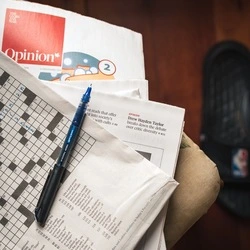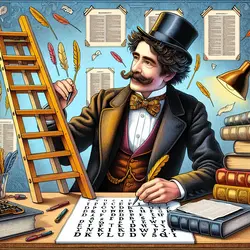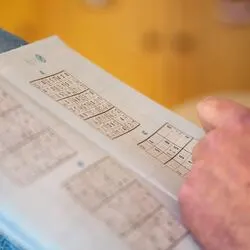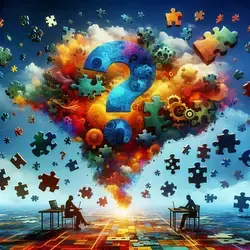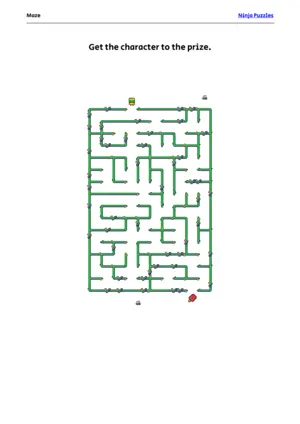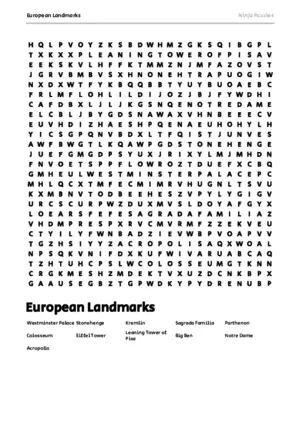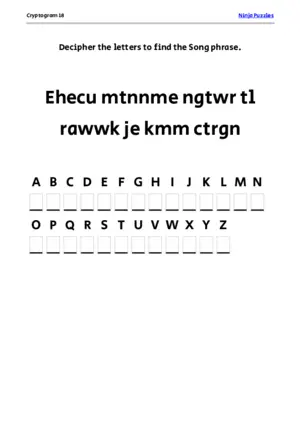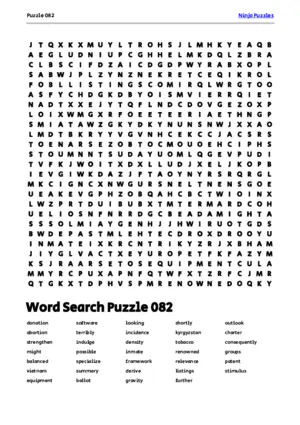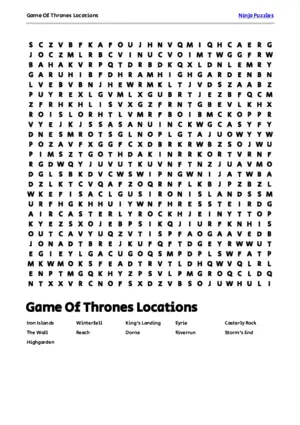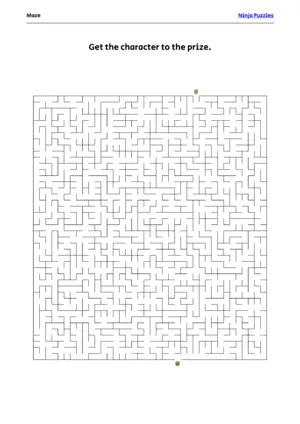Exploring the Tapestry of Crossword Puzzles
About the author • Ben Gillbanks spent 11 years working at Miniclip.com as a game and web developer. He spent a lot of that time working on and thinking about games and puzzles. He now makes apps, and puzzles, and apps that make puzzles. More info →
Crossword puzzles have long been a beloved pastime, challenging our minds and entertaining us for generations.
- Crossword puzzles originated in the late 19th century, with Arthur Wynne creating the first known puzzle in 1913.
- The puzzles quickly gained popularity, becoming a staple in newspapers and evolving into various forms, including online platforms and themed puzzles.
- Crossword puzzles have become ingrained in pop culture, appearing in media, literature, and even shaping social interactions.
Why did Arthur Wynne create the first crossword puzzle?
He was tasked with creating a new puzzle for a newspaper and drew inspiration from other word games of the time, sparking a revolution in recreational activities.
These engaging word games challenge our knowledge, sharpen our minds, and provide hours of entertainment. In this article, we will delve into the rich tapestry of crossword puzzles, tracing their origins, exploring their evolution, and examining their impact on popular culture.
The Origins of Crossword Puzzles
Crossword puzzles have a fascinating history dating back to the late 19th century. The inspiration behind the creation of crossword puzzles can be traced back to the inventive mind of Arthur Wynne. In 1913, Wynne, a British-born journalist living in the United States, was tasked with creating a new kind of puzzle for the “Fun” section of the New York World newspaper.
The first known crossword puzzle was created was published in the New York World newspaper on December 21, 1913. Wynne’s puzzle was diamond-shaped and featured a simple grid with numbered squares.
What inspired Arthur Wynne to create the first crossword puzzle? Some say he drew inspiration from other word games popular at the time. Others believe he was influenced by ancient word square puzzles found in ancient civilizations like Egypt or Rome. Regardless of its origins, Wynne’s creation sparked a revolution in recreational activities that continues to captivate millions today.

The concept gained popularity quickly, and by the 1920s, crossword puzzles were a regular feature in newspapers. The first crossword book, “The Cross Word Puzzle Book,” was published in 1924 by Simon & Schuster, solidifying the puzzle’s place in pop culture.
In the UK, the crossword puzzle evolved independently. The first British crossword appeared in Pearson’s Magazine in 1922. Crosswords became a beloved pastime, offering entertainment and mental stimulation.
The 1940s and 1950s marked a golden age for crossword puzzles, with the New York Times becoming a prominent platform for top-notch puzzles. Will Shortz, the Times’ crossword editor since 1993, has played a significant role in shaping the puzzle landscape.
With the advent of the internet, crossword puzzles found a new home online. Websites like The New York Times Crossword and various puzzle-solving apps gained popularity, reaching a global audience.
Today, crosswords come in various forms, from traditional print versions to interactive online puzzles. They remain a cherished activity, combining language, logic, and a touch of wit.
Evolution and Variation
Crossword puzzles have undergone a fascinating evolution over the years, continually adapting to changing tastes and technologies.
Originating in newspapers, crossword puzzles were initially a pen-and-paper affair. Their popularity surged in the early 20th century, becoming a staple in print media. The New York Times played a pivotal role, setting high standards for quality and innovation.
As crossword enthusiasts sought new challenges, puzzle creators introduced variants. Cryptic crosswords, with their wordplay and linguistic twists, gained traction in the UK. Diagramless crosswords, where the grid is blank, pushing solvers to deduce where the black squares belong, added an extra layer of complexity.
With the rise of the internet, crossword puzzles found a new home. Online platforms and apps provided interactive experiences, allowing users to solve puzzles on screens. This shift expanded accessibility, attracting a diverse audience. Digital formats also allowed for real-time collaboration on solving puzzles, fostering a sense of community.
Puzzle creators began incorporating themes, adding a layer of storytelling to the grids. Themed crosswords often feature a central idea or a set of related clues, enhancing the solving experience. These puzzles challenge solvers to think beyond individual clues, fostering a deeper engagement with the content.
Competitive crossword solving gained popularity with the introduction of tournaments. Events like the American Crossword Puzzle Tournament (ACPT) provided a platform for enthusiasts to showcase their skills and compete against the best. These tournaments not only celebrate the art of puzzling but also contribute to the evolution of solving techniques.
The integration of crosswords with social media platforms further expanded their reach. Sharing favorite clues, discussing solving strategies, and collaborating on puzzle-solving became a social activity, creating a vibrant online crossword community.
Pop Culture Phenomenon
In media, crosswords are a staple feature in newspapers, magazines, and online platforms. They serve as a form of interactive entertainment, engaging readers and providing a mental workout. The New York Times crossword, in particular, has gained iconic status, with its reputation for challenging and innovative puzzles.
Beyond traditional print, crosswords have found a home in popular culture through television and film. Characters solving crosswords have become a familiar trope, symbolizing intellect and problem-solving skills. Shows like “The Simpsons” and “The Office” have featured memorable crossword moments, contributing to the puzzles’ cultural presence.
In literature, crosswords often play a role in mysteries and thrillers. Authors use them as plot devices, incorporating clues or solutions into the narrative, adding an intellectual layer to the storytelling.
Moreover, crosswords are not just puzzles; they are social currency. References to crosswords abound in sitcoms, reflecting their ubiquity in daily life. Crossword tournaments, both real and fictional, have become competitive events, further cementing their status as a cultural touchstone.
Crossword puzzles have permeated pop culture in numerous ways. They have appeared in movies like “The Pursuit of Happyness,” where a crossword puzzle plays a pivotal role in the protagonist’s life. Popular television shows such as “The Simpsons” and “Friends” have also featured episodes centered around these puzzles, highlighting their widespread appeal.
As we reflect on the journey of crossword puzzles, it is evident that they have stood the test of time. From their humble beginnings to their current status as a beloved pastime, they continue to captivate people of all ages. The enduring popularity of crossword puzzles is a testament to their ability to engage and challenge us while providing an enjoyable escape from our daily routines.
Crossword puzzles are more than just word games; they are woven into the fabric of our culture. Their origins may be traced back over a century ago, but their relevance and impact remain strong today. As we navigate through this tapestry of words and clues, let us appreciate the ingenuity behind crossword puzzles and celebrate their enduring popularity.


